How I Built an Endometriosis-Friendly Wardrobe

Caroline Reilly
I’ve loved fashion ever since I got my first pair of plastic princess heels. (This only intensified after the grueling days of high school, when my mom took me to the mall for “retail therapy.”) As an adult, I saved for knockout dresses and lingerie that made me feel like I could conquer anything, even just on a CVS run. That changed when I was diagnosed with endometriosis in my first year of law school, after I’d had symptoms for almost 20 years, ever since my first period. I’ve now been through five surgeries, countless hours of physical therapy and doctors’ appointments, and more than a handful of harrowing ER trips. I’m lucky to have wonderful care as I fight this disease with my all…but no one told me I’d have to completely overhaul my wardrobe.
Worsening chronic pain transformed getting dressed from a pleasure to a fraught challenge. Jeans felt like fiberglass around my abdomen—and pelvic discomfort meant that any pants became my worst enemy. Lacy bras and bodycon dresses that I spent college feeling very much like that girl in set my nerve endings on fire. Wearing stiff clothes could be so unbearable that I felt like I was going to throw up.
In the years since, I’ve mastered the art of looking and feeling good despite these limitations. I have a network of close friends who also have endo. We text one another when we find the softest pants or most flattering dress, along with mirror selfies so we can ooh and ahh over how hot all our chronically ill besties are. Even if most of our outfits aren’t headed on some grand adventure, it’s important for us to feel cute or hot or sophisticated or whatever vibe we’re going for as we run an errand, go on a mellow walk, or enjoy a night in.
When dressing became hard, so did looking in the mirror and liking the person I saw. Finding my way back to wearing clothing I love, and feeling good when I look in the mirror, has been transformative as I’ve figured out post-diagnosis life. After endless experimentation and group chats (and many online returns), here’s what I’ve learned about dressing myself with a disability—while also maintaining the sense of pleasure I’ve found in clothes since my princess-heels days.
When it comes to pants, give yourself room to breathe.
Pants suck when it comes to pain-friendliness—they can be constrictive and overly structured. Given that I generally avoid them, you can trust that the ones I do like are exceptional. I look for stretchy materials that don’t dig into me and I buy a lot of pants one size up, a trick one of my best friends with endo taught me: Tight waistbands are absolute hell when you have any kind of pelvic pain, and God forbid you have to sit down. With endo, there’s also always the potential for bloating, which is often referred to as endo belly. I can leave my house without any issue there and come home a few hours later feeling like I swallowed a balloon, so it’s important for my pants to be accommodating.
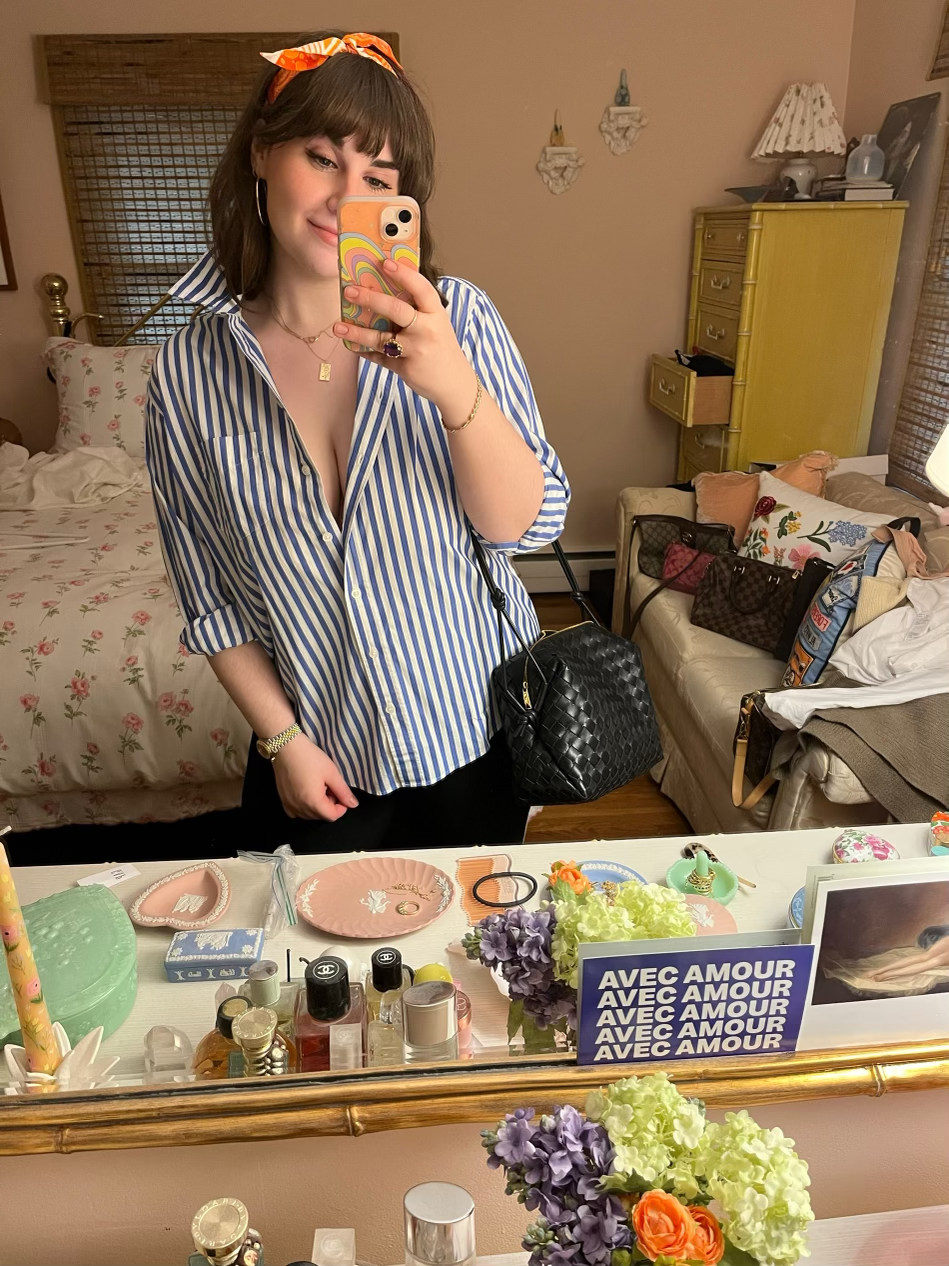
shirt.png
When I want to look professional, I wear stretchy pencil pants (Norma Kamali, $99). For chino-style pants, I make sure the waistband is comfortable and the fabric is lightweight, but holds its shape—this Djerf Avenue pair is my go-to ($125). And while they might technically be athleisure, I am a recent convert to this pair of Lululemon mini-flares ($118), as well as this very affordable dupe from Aerie ($32). Each has a wide waistband that looks and feels seamless and the slight bell bottom makes them look a little more like pants and a little less like yoga pants, especially paired with a cute loafer.

Real Me High Waisted Crossover Flare Legging
$55.00, Aerie

Pencil Pant
$99.00, Norma Kamali
Make oversized, boxy tops your best friends.
For shirts, I—surprise!—focus on fabrics that feel good on my skin. That’s typically cotton poplin that’s crisp, but not scratchy; anything silky (whether that’s silk or satin); modal; rayon; and cashmere-esque knitwear. I especially love silhouettes that make me feel feminine without being too tight, like oversized button-ups from Gap and Abercrombie. For romantic blouses, I splurge on Dôen. I recently wore one of their sleep tops in post-op, and I felt actually, genuinely, really pretty after nearly five hours on an operating table. My exact sleep top is no longer available, but this beauty is very similar (Dôen, $148), and they have a wonderful selection of silky and breezy cotton sleepwear separates and nightgowns.
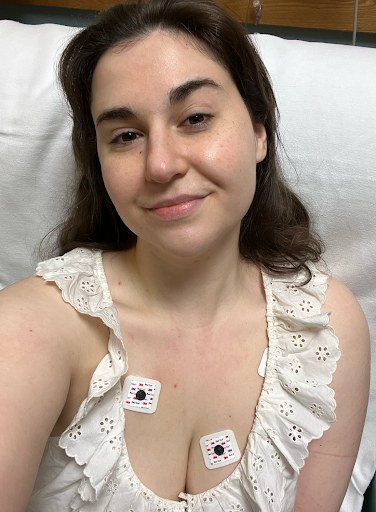
What Chronic Pain Taught Me About Getting Dressed.png
For knitwear, I make sure there’s zero risk of them making me itchy or instigating skin irritation. I personally break out in hives from wool so, for me, that means looking specifically for synthetic or cotton knits. It takes some trial and error because online descriptions are often so far removed from what arrives on your doorstep, but typically anything with a cashmere feel is a good bet, as is anything that’s 100% cotton. Along with avoiding wool, I typically stay away from knits with a linen component, which sometimes just feels like they’ve mixed straw into the fabric. Some faves include sweaters from Djerf Avenue, cotton tops from Sézane, and anything from Gap’s CashSoft line. I’ve recently found my holy-grail T-shirts for $15 at Old Navy. I love the cropped and boxy vintage cuts, both of which are super-gentle.

Bestee Cropped Crew-Neck T-Shirt
$20.00, Old Navy

Organic Cotton Big Shirt
$55.00, GAP
Wireless bras are the way to go, and if you have vulvar pain, opt for underwear in loose or fuller silhouettes.
Years ago, my physical therapist told me to skip underwire bras as often as I could—and to forgo panties entirely because they can trigger or worsen my pelvic floor dysfunction (a technical term for the nerve and muscle pain that can come with endo). Each and every one of my friends with endo has also heard this from their docs: Basically, if it’s got a seam that digs into your vulva or a wire that presses against your ribs, it’s going to make your already-shitty pain worse.
A while back, I compiled a list of tips on The Lingerie Addict about lingerie and pain prevention, but here are some quick guiding principles. If you want or need to wear undies even if you’ve been told it can set off vulvar sensitivity, try loose-fitting pieces made from cotton—or my favorite fabric for intimates, modal, which has a mushy, buttery softness to it.
Commando’s modal Butter Collection underwear is extremely lightweight. If I absolutely have to wear underwear, I know I can rely on it for adequate coverage without worsening my pain. One of the most painful things about traditional briefs and thongs is the seaming that sits between my legs, so I also swear by bike shorts and boxers (Skims; starting at $28), the cut that’s least likely to ride up when I move around. The Whipped Collection from Negative includes modal boxers that are fantastic for working around vulvodynia symptoms.
For bras: I bought my first Touch Feeling bra (Hanro; $99) one day when I was shopping with my mom. I ducked into Neiman Marcus when I felt too overcome with pain to keep my underwire bra on, and I found this hero. I’ve been a convert ever since. Whatever you choose, go with a bra that’s wireless and breathable.

Soft Lounge Boxer
$38.00, Skims

Touch Feeling Crop Top
$95.00, Hanro
If you wear dresses, choose ones that you can feel every kind of good in.
When the sensation of fabric against my skin is agony, I rely on flowy dresses. The Nap Dress (Hill House Home; starting at $150) is a blockbuster for a reason; I have eight in my closet. It has smocking that stretches with your body and comes in a variety of styles and sizes up to XXXL.
When I need to be more put-together, I seek out material that looks sleek, but feels like pajamas. Many Norma Kamali formal dresses are made from super-flexible fabric, so you can feel comfortable and glamorous at a fancy event. And sometimes just for a casual afternoon at the farmer’s market, I throw a white blouse over this NK tube dress ($135).
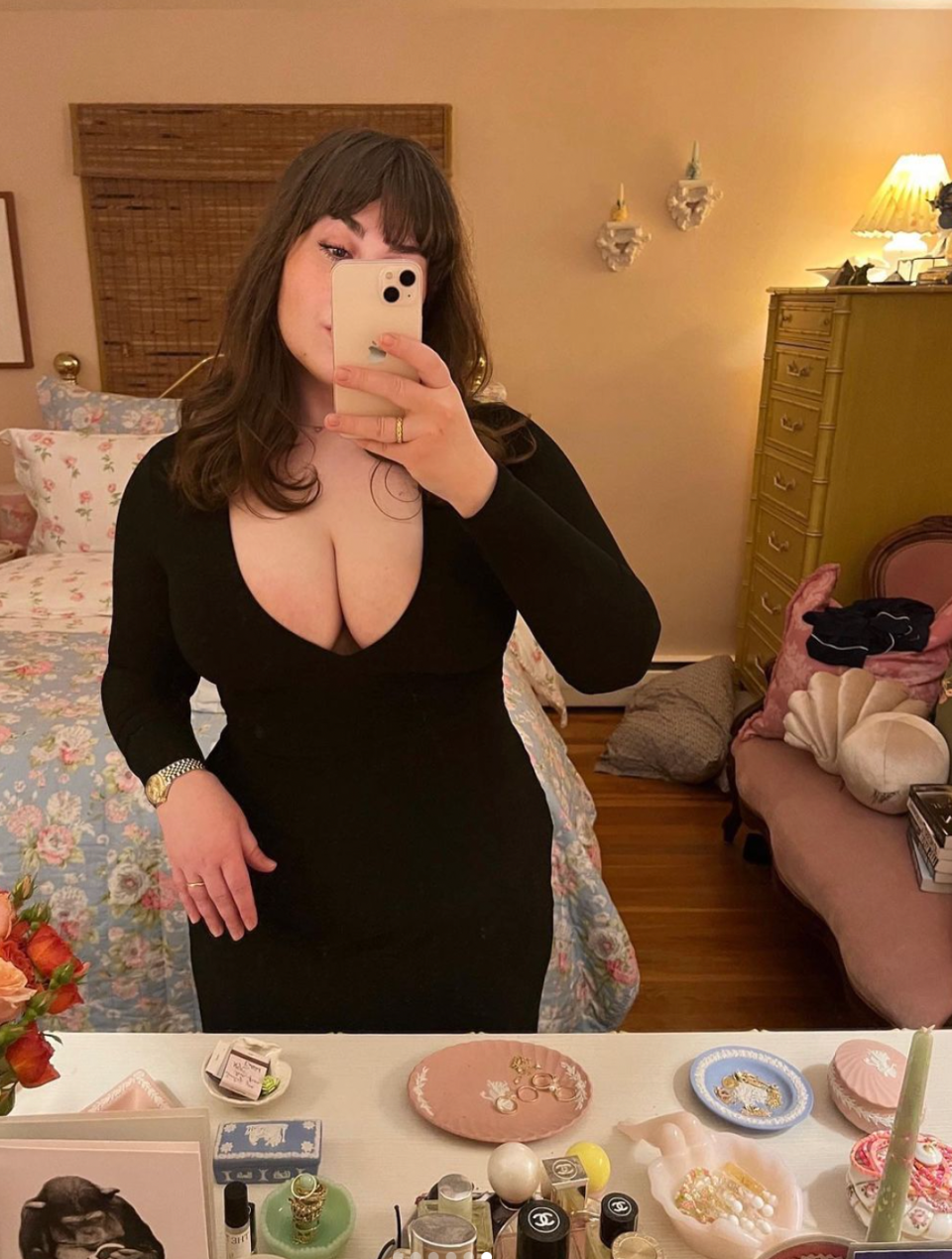
I also like sexy dresses that are supportive, even sans shapewear (oh, you think I’m putting on compression shorts with pelvic pain? Funny). I wear the Taylor Tea Dress (AYM; $105) and the Harper Halter Dress (AYM; $128) out to dinner with friends (and on the rare occasion I feel like gracing a man with my presence on a date) because I can trust that the soft material won’t trigger my pain during the night.

The Ellie Nap Dress
$150.00, Hill House Home

Harper Halter Dress
$28.00, AYM Studio
Spend a lot of time in activewear or loungewear? Make those pieces some of your favorites in your dresser.
Loose rompers (Beyond Yoga; $99) are my ride-or-dies when everything feels like it’s made from broken glass and my body hurts if I even breathe wrong. For separates, I look for fabric that feels whisper-like on my skin, but it still has some hold—often, a combination of a soft, stretchy material like modal and rayon with added spandex or another component for stretch, which is important in its own way. (Sometimes, as counterintuitive as it seems, it does feel good to have a little support to your clothing when all your pelvic muscles are basically atrophied and exhausted.) Beyond Yoga’s Spacedye collection gets me through flares regularly. Last year, I had my IUD taken out, a hospital visit for a pain flare, and then an IUD place back in all within a matter of weeks. I wore Spacedye sets the whole time—not only could I nap comfortably in them, I also just felt better looking in the mirror and seeing a bubblegum-pink coordinated outfit.
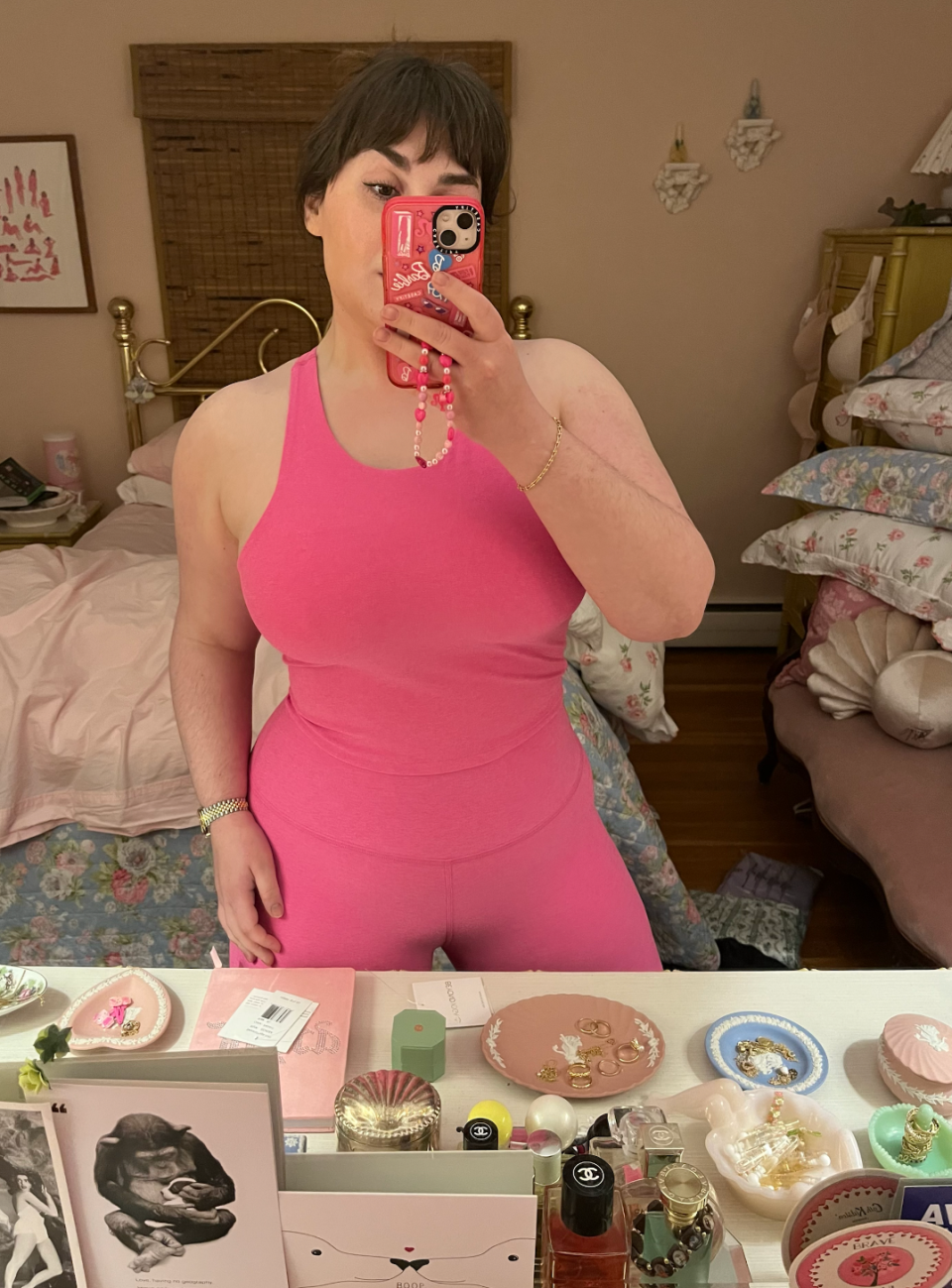
Aerie’s loungewear is also great (and less expensive than Beyond Yoga). Its Offline joggers (Aerie; $32) and sweatpants (Aerie; $45) have been MVPs of my surgery recoveries.

OTT Fleece Super Wide Leg Pant
$65.00, Aerie

Featherweight Hang Loose Jumpsuit
$99.00, Beyond Yoga
Look for sleepwear that allows you to actually rest.
Getting quality sleep can be hard to come by when you’re in pain since it’s so goddamn hard to get and stay comfortable. If I wear lace, it can trigger discomfort to the point that I wake up. If I wear something with a waistband, it can hurt my pelvis overnight. If I’m too covered-up, I risk being sweaty and in pain, which is actually what Dante’s Inferno is about, if you read it closely.
Simple is best. I opt for a bare-bones silk slip every night; it keeps me cool, the material feels gentle on my body, and I feel really pretty in it, which—let me just remind you—you deserve, even if you’re in pain! I love the selection of patterned slips on Natori, which has a price range starting around $50.
If you like something a little longer or prefer cotton, Eileen West is the GOAT of nightgowns. After a recent surgery I contracted an infection, and I wore nothing to bed but Eileen West nightgowns for months: They kept me from overheating, they were super-easy to care for, and I also kinda felt like I was in a Jane Austen novel, which was great for morale.
If you’re more of a separates person, Gap makes modal pajamas that are perpetually on sale and come in a million cute colors, like this PJ shirt ($31) and these bottoms ($44).

Modal Pajama Shirt
$40.00, GAP

Tencel Maritime Sapphire Floral Waltz Nightgown
$72.00, Eileen West
When nothing feels good, add a fly accessory.
Unfortunately, there are always going to be days that no matter what I do, and no matter what I wear, I have no choice but to stick to my stretchiest pair of leggings and my biggest, softest sweater. It’s not the most glamorous look—and feeling like I’m being controlled by my pain is also really emotionally trying.
On days like that, I rely extra-hard on my precious collection of accessories to cheer me up. My go-to is a silk scarf because they’re slinky and unobtrusive. I scour resale websites like TheRealReal for deals on designer pieces; ditto for bags and jewelry. I invest in accessories because I know that they’ll get a ton of love (and a great cost-per-wear).
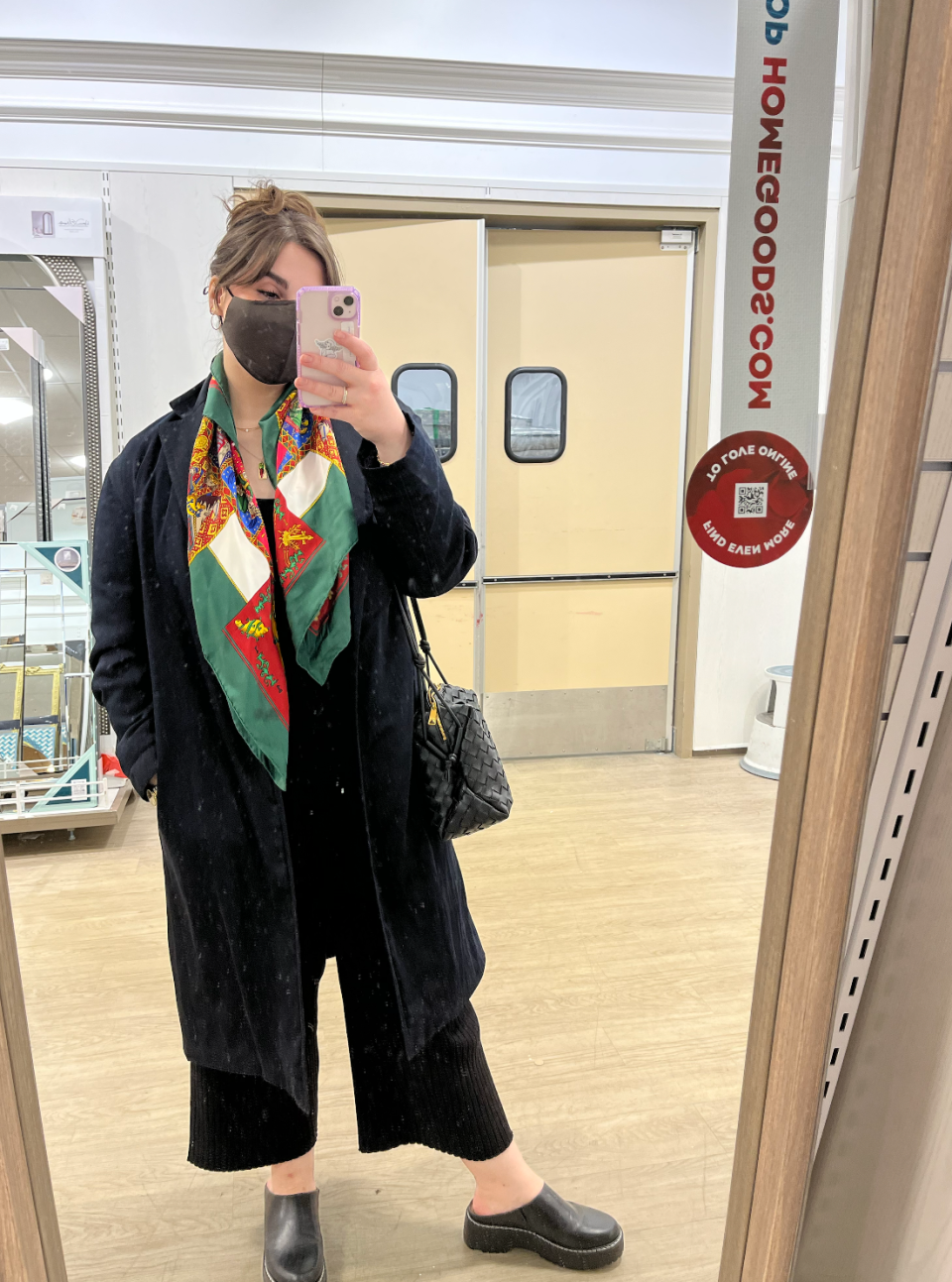
Accessories help me feel prettier and more glamorous—more human—on my worst days. As I see it, that’s what fashion is about: feeling like myself. It buoys my spirits and makes me feel whole.
Finding joy in clothes also feels a repudiation of the insidious discrimination that chronically ill and disabled people should subsist on a life that is less: less indulgent, less beautiful, less colorful, less full of the things that make us who we are apart from these diseases. Chronic pain whittles so much of your life away, and when you try to claw some of it back, the world tells you you’re asking for too much. And, sorry, but that’s bullshit.
So: Go build a fire wardrobe…that doesn’t also set your pain on fire. I hope you find pieces that make you feel expressive, comfortable, and fly as hell—all of which you deserve, whatever that looks like to you.
Related:
How to Keep Your Creativity Alive When You Have a Chronic Illness
How to Tell If Your Irregular Periods Are a Sign of a Bigger Health Issue
Grocery Diaries: An Avid Meal Prepper With Endometriosis and a Mushroom Allergy
Originally Appeared on SELF

